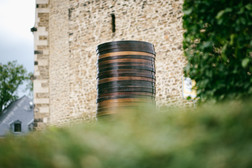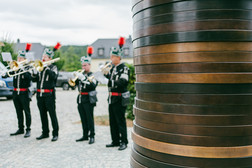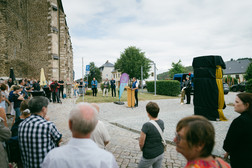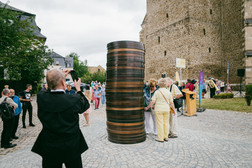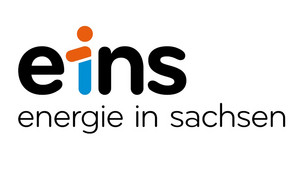Sean Scully: Coin Stack 2
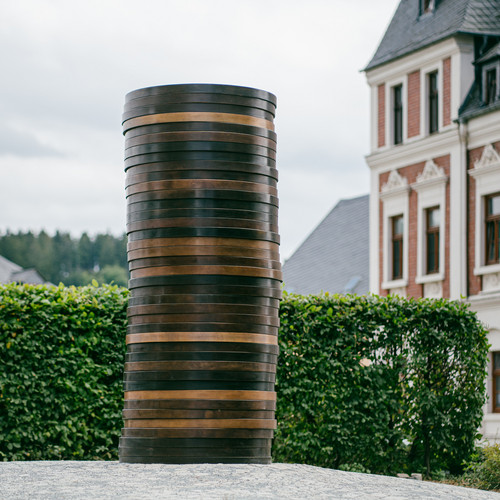

A stack of coins is one of the most impressive childhood memories of the painter and sculptor Sean Scully, who was born in Dublin, Ireland, in 1945. After his family moved to a working-class neighbourhood in south London, Scully grew up in modest circumstances and watched his father, who worked hard as a hairdresser, arrange the tip into a small, irregular column after work, saving up his children's pocket money week after week. Scully, who has won numerous international awards, translated his memory of this into a series of bronze sculptures entitled Coin Stack . The round shape of this series has so far been a special feature in his painterly and sculptural work, which is characterized by geometric stripes and angular blocks. Coin Stack consists of 40 round discs, whose differently colored surfaces are reminiscent of the father's coin stack. Slightly offset and arranged on top of each other around a concentric center, they reach a height of 2.40 meters.
As you approach the late Gothic St. Wolfgang's Church, also known as the "Miners' Cathedral", the church square opens up between its long south side and a row of beautiful multi-storey town houses. At the end of the square, the stack of coins seems to grow out of the stone-gray pavement. And here the sculpture also associates the legendary story of the successful labor struggles of the Schneeberg miners in the years 1496 and 1498. After a good 25 years of intensive silver mining, the deposits became fewer and it meant greater efforts to exploit them. In order to keep profits high, the employers intended to 'break' a penny each of the workers' weekly wages. The proud and well-organized miners successfully pushed back the project and so today we can speak of what is probably the first workers' strike of the early modern period.
Sean Scully
Coin Stack 2
In Schneeberg, church square at St Wolfgang's Church
Material: Bronze
Size: 1.4 m x 2 m
Set up with the support of the town of Schneeberg.
Address:
Church square at St Wolfgang's Church
08289 Schneeberg
to the location on Google Maps
There is a lot to discover at the PURPLE PATH! Experience tips presented by the Tourismusverband Erzgebirge e.V.
